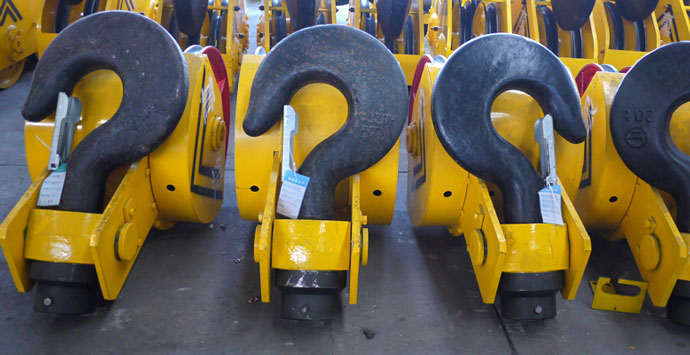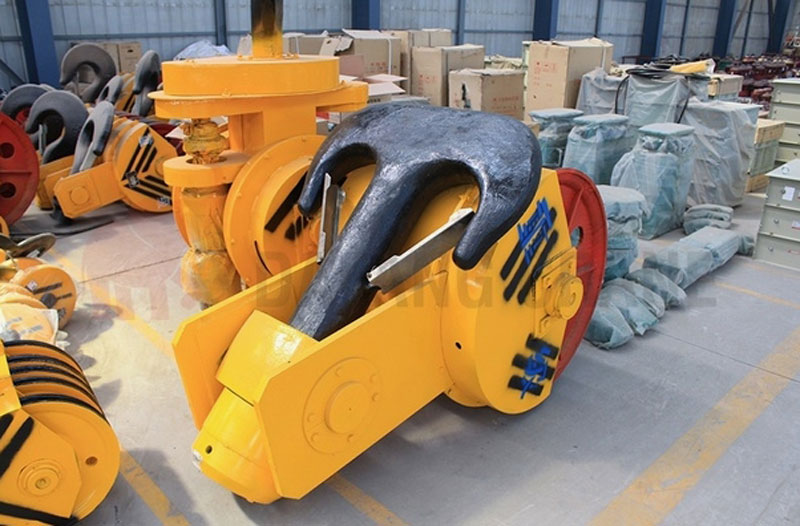Pokud jde o zvedání těžkých břemen na stavbách, loděnice, sklady, nebo výrobní závody, a HOOK CRANE je jednou z nejkritičtějších součástí. Pravidelná kontrola jeřábových háků nejen zajišťuje bezpečnost, ale také udržuje shodu s průmyslovými normami a snižuje nákladné prostoje. V tomto článku, poskytujeme podrobný kontrolní seznam pro kontrolu háku jeřábu, který pomáhá operátorům a bezpečnostnímu personálu udržovat zařízení v nejlepším stavu.

Jeřábové háky jsou při zvedání vystaveny nesmírnému namáhání a opotřebení. Postupem času, to může vést k únavě, deformace, nebo dokonce praskliny. Selhání háku může mít za následek upuštění nákladu, vážná zranění, a rozsáhlé poškození zařízení. Aby se takovým nehodám zabránilo, je důležité zavést konzistentní kontrolní rutinu.
Kontroly by měly být prováděny v různých intervalech:
Denní (časté) kontroly provozovatelem před použitím
Pravidelné kontroly jako součást programu plánované údržby (měsíční, čtvrtletní, nebo ročně v závislosti na využití)
Kontroly po nehodě po přetížení, nehody, nebo podezření na poškození

Níže je uveden komplexní kontrolní seznam pro kontrolu háku jeřábu:
1. Vizuální vyšetření
Zkontrolujte trhliny, přezdívky, rýhy, nebo opotřebení na povrchu.
Hledejte korozi, rez, nebo deformace těla nebo dříku háku.
Ujistěte se, že nejeví žádné známky přehřátí nebo změny barvy.
Zkontrolujte bezpečnostní západky, abyste se ujistili, že jsou bezpečné a funkční.
2. Otevření házení v krku
Změřte otvor hrdla a porovnejte jej s rozměry původního výrobce.
A 10% zvětšení otvoru hrdla obvykle ukazuje na nebezpečnou deformaci.
3. Hák Twist nebo Deformace
Pomocí měřicích nástrojů zkontrolujte, zda není háček zkroucený nebo ohnutý nad přijatelnou hranici.
Deformace větší než 10 stupně od roviny neohnutého háku jsou obvykle nepřijatelné.
4. Opotřebení a eroze
Zkontrolujte oblasti, kde se hák dotýká nosného řetězu, drátěné lano, nebo zvedací popruhy.
Pokud opotřebení přesahuje 10% původního rozměru průřezu, hák by měl být vyřazen z provozu.
5. Označení a identifikace
Ujistěte se, že nosnost a označení výrobce jsou čitelné.
Chybějící nebo nečitelné značky mohou vyžadovat výměnu háčku nebo další vyhodnocení.
6. Funkce bezpečnostní západky
Ujistěte se, že pružina západky funguje správně a západka zcela uzavírá otvor háku.
Poškozené nebo chybějící západky musí být okamžitě opraveny nebo vyměněny.
7. Háčková matice, Kolík, nebo Integrita šroubu
Zkontrolujte upevňovací části háku – matice, špendlíky, nebo šrouby – kvůli utažení a poškození.
Uvolněné nebo poškozené upevňovací prvky představují vážné bezpečnostní riziko.

Vždy zdokumentujte výsledky kontroly, včetně:
1. Datum a čas kontroly
2. Jméno a podpis inspektora
3. Jakékoli zjištěné závady nebo požadovaná údržba
4. Přijatá opatření (opravy, náhrady, odstranění háčku)
Udržování řádných záznamů podporuje odpovědnost a shodu s OSHA, ANSI/ASME, nebo místní předpisy.


Vážíme si vaší zpětné vazby! Vyplňte prosím níže uvedený formulář, abychom mohli přizpůsobit naše služby vašim konkrétním potřebám.


Kliknutím na tlačítko získáte informace o produktu a nabídky na WhatsApp.
Získejte citát
Nejnovější komentáře